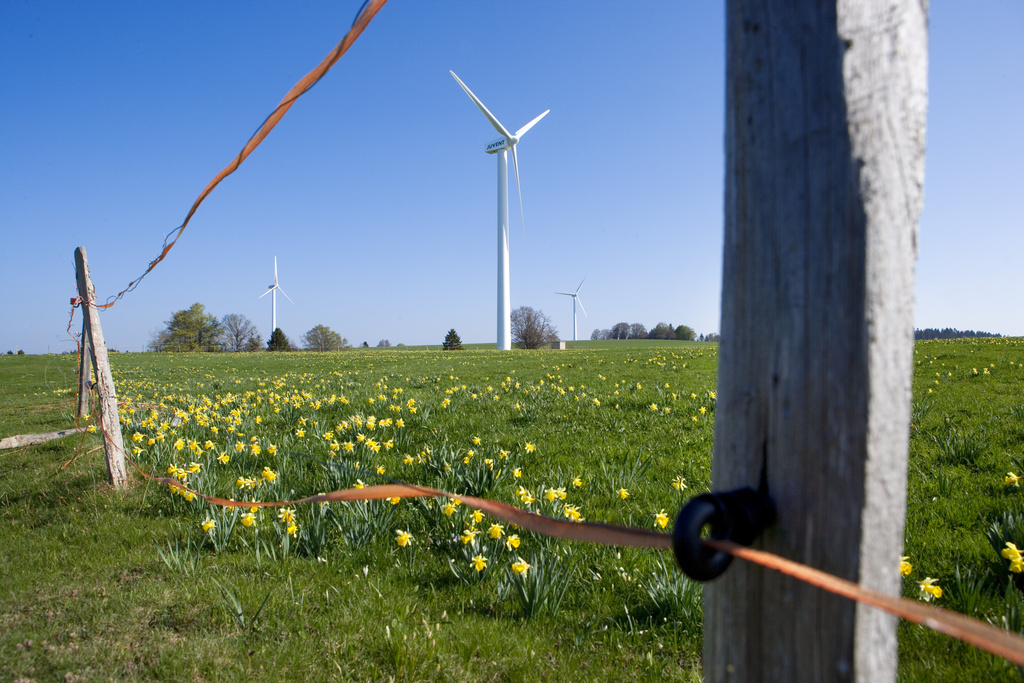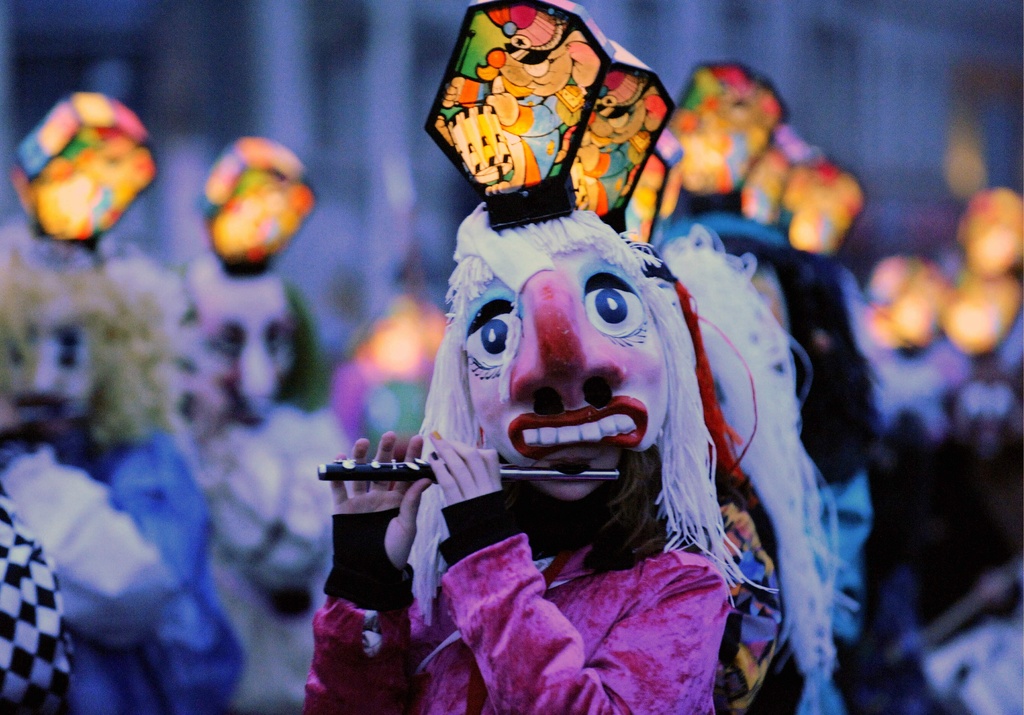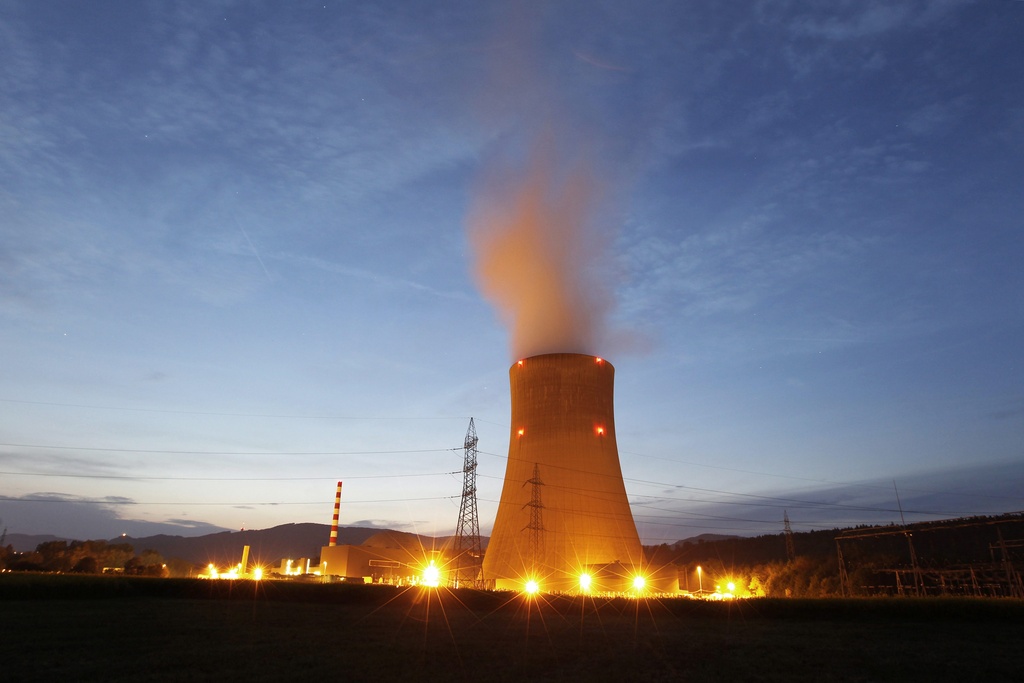How green energy could inherit problems

The Fukushima nuclear disaster in Japan has renewed interest in green energy – but every energy source has a downside.
Many people think wind turbines are a blot on the landscape – and those who live close by complain of the noise they make. And while solar panels are fine on new buildings, no one would think of putting them on a cathedral.
The Swiss Heritage Society released a position paper last Thursday on the introduction of wind power, entitled: “Yes to green power – but not at the expense of the landscape and historic sites”.
The paper says that as far as sustainable development is concerned, the preservation of landscape and architecture is as much in the public interest as the ecological production of energy.
An earlier paper on solar panels warned that they too, if badly placed, could have a negative impact on the appearance of historic buildings.
“The potential conflict of aims calls for a search for intelligent solutions,” it said.
Test case Lonza
A conflict of aims emerged in Basel in April, when the Lonza chemical company approached the cityscape commission to discuss the possible installation of a photovoltaic system on its headquarters, a tower block near the main station.
Lonza spokesman Dominik Werner told swissinfo.ch that the company had wanted to find out if it was worth arranging a feasibility study. Although Lonza is keen to use renewable energy if possible, it needed to determine whether such a system would make sense economically before going any further.
But the commission turned the request down flat on the grounds that the tower – built in the 1960s and something of a city landmark – was a building deserving of protection.
That decision was subsequently overruled by the head of the city’s construction department, Hans-Peter Wessels, who was quoted by the bazonline.ch website as saying that an acceptable design was possible, and he hoped “other property owners will consider installing such systems”.
Economising
Adrian Schmid of the Heritage Society told swissinfo.ch that to suggest we might have to choose between living as we do and preserving the natural and architectural heritage is the wrong way to look at the issue.
“The first thing is to be more economic with energy – for example, we need a law that says every apparatus must have a stand-by facility, and then we must use it more efficiently,” he said.
And renewable energy should be promoted where it makes sense, most notably in new buildings, he said.
Even in older buildings a lot can be done, according to Green party politician Robert Cramer. Cramer, who currently represents the canton of Geneva in the Swiss Senate, has recently taken over as president of the Geneva branch of the Heritage Society.
For him there is no contradiction between being green and protecting heritage. He prefers to speak of challenges.
“I think it is useful to have someone who knows something about renewable energy and energy saving being involved in heritage protection because this avoids provoking conflicts where there aren’t any,” he told swissinfo.ch.
“You can do plenty of things to insulate buildings and to promote renewable energy, which don’t infringe upon heritage demands. But to do that, you must know your job,” he said, citing the example of double windows which can be installed inside a room, leaving a historic façade intact.
“I am sure solutions exist. It’s not a matter of who is going to win a war between supporters of our heritage and supporters of renewable energies; what we lack is professional training and people with the relevant technical knowledge.”
National coordination
Wind turbines are a second possible source of conflict. The Heritage Society has called for a national landscape concept, to get the best return from the smallest number of sites.
It says the current guidelines are not binding, and not always observed.
Schmid told swissinfo.ch that while illegal decisions can be taken to court, it “unfortunately keeps happening” that communes give permission for turbines to be built on protected land.
“There are certain investors who have an interest in getting the protection changed,” he said.
Environmental engineer Emmanuel Contesse, co-director of the Natura consultancy, told swissinfo.ch that planning is essential. Where the local population had been kept informed – as was the case in the part of the Jura within canton Bern – there had been far less resistance than elsewhere, he said.
“There are indeed problems with protected zones. It’s important that the authorities – whether at cantonal or federal level – should maintain them, and not create any precedents in that area,” he said, while admitting that it can be difficult for communes to resist pressures.
“It’s not the first time there have been projects in protected zones, but there are laws to settle this kind of problem,” he pointed out.
As to whether renewables can ever cover our energy needs, he, too, argues that the focus should rather be on reducing consumption.
“We’d end up with a dictatorial system if we wanted to turn back our lifestyle in one go.”
As a signatory to the Kyoto Protocol, Switzerland in 1997 committed itself to reducing greenhouse gas emissions.
In an initial phase CO2 emissions were to be reduced 10% over 1990 levels by 2010.
The government foresees raising the target to at least a 20% cut in emissions by 2020, partly through a CO2 tax, an emissions trading system and compensation measures outside Switzerland.
Parliament approved the 20% target, but wants cuts to be achieved through measures within Switzerland only.
Discussions are continuing on extending the CO2 tax from heating oil, gas and coal to also include petrol.
Environmental groups collected enough signatures for a nationwide vote on separate proposals for a 30% cut in emissions as well as for a ban on SUVs.
The EU, which does not include Switzerland, has also set a 20% emission cut. The 27-nation bloc has set targets for individual member countries and approved a number of measures.
Switzerland’s five nuclear power reactors generate 39.3% of the country’s electricity.
Hydro-electric stations: 55.8%.
Conventional power stations: 2.9%
New renewable sources (solar, wind, bio-fuel and biogas): 2%.

In compliance with the JTI standards
More: SWI swissinfo.ch certified by the Journalism Trust Initiative














You can find an overview of ongoing debates with our journalists here . Please join us!
If you want to start a conversation about a topic raised in this article or want to report factual errors, email us at english@swissinfo.ch.